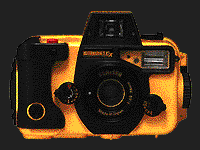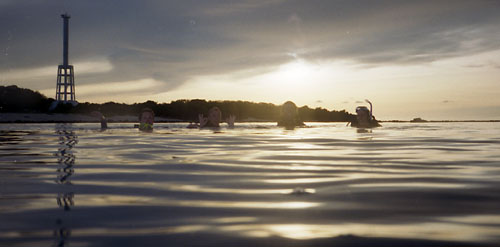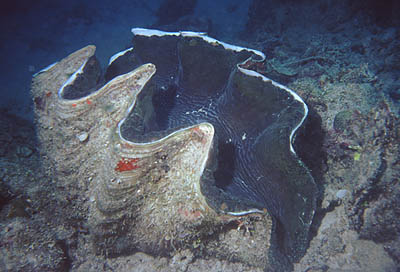 Using
this camera forces you to remember the basics of photography.
Using
this camera forces you to remember the basics of photography.
All camera and lens systems only have three important settings - aperture, shutter speed, and focus. On a compact camera, all three are dealt with automatically. On a more sophisticated camera such as my Mamiya 7II, there is less automation but manual focusing is aided by the split-image rangefinder and the camera's built in exposure meter can set the shutter speed for you automatically. On the Motormarine IIEX, not only are aperture and shutter speed both set manually, there is only the most rudimentary exposure meter to help you (which didn't work on the camera I borrowed) and focus is manual with NO RANGEFINDER to help! Yes, this means focusing is done entirely by guesswork.
The Motormarine manual boldly claims that the camera is such fun to use, you will be using it above the surface all the time. It suggests that you could use this as a sturdy, all-purpose travel camera. I don't know if it's just me, but a fixed-lens, completely manual, non-SLR camera with guess-focus is not my ideal surface machine! If Sea & Sea had given it a rangefinder the story would be different.
 The Motormarine
does work above the water, but with completely manual exposure settings,
no proper meter and guess-focus, you wouldn't want to make a habit of
it. I was pleased with this shot as a proper camera exposure meter would
have underexposed due to the bright sunlight in the middle of the frame.
My own guess was pretty much spot on! Sometimes automation can be more
of a hindrance than a help...
The Motormarine
does work above the water, but with completely manual exposure settings,
no proper meter and guess-focus, you wouldn't want to make a habit of
it. I was pleased with this shot as a proper camera exposure meter would
have underexposed due to the bright sunlight in the middle of the frame.
My own guess was pretty much spot on! Sometimes automation can be more
of a hindrance than a help...
 Taking
a picture underwater with the Strobe involves the following procedure:
Taking
a picture underwater with the Strobe involves the following procedure:
1) Guess distance to subject
2) Set focus
3) Set strobe angle
4) Calculate aperture using table on the side of the strobe. The table gives the correct aperture settings for a given distance and film ASA.
5) Set aperture
6) Fire!
If you're using the macro attachment, you just have to get the subject between the rods on the macro contraption - the focus is pre-set (to infinity for the 2:1 macro adapter I used). The strobe has to be angled right down, but as I mentioned earlier the best thing to do would be to detach the strobe from the bracket so you can hold it closer to the subject and avoid shadows.
If you're using the accesory wide angle lens, you don't have to set the focus (again it's pre-set to infinity). But you still have to guess the distance to the subject - so that you can angle the strobe correctly and adjust the viewfinder to compensate for parallax error!
Conclusion
Underwater photography is great fun, but getting good results is extremely tricky and the equipment is very expensive. You've also got to put up with your dive buddy getting bored and wandering off whilst you spend 10 minutes trying to get one in-focus picture of a clownfish!
I expect the best bet for most amateur photographers nowadays would be to use a housed digital camera - certainly what I would consider doing next time I get the chance to go diving. But the Motormarine II is great for reminding you about the basics of photography and in the right hands (not mine, maybe, although I thought my results weren't bad for a first attempt!) is capable of great results.
| [Home] | [Order Prints] | [World Map] | [Articles] | [About] | [Contact] |